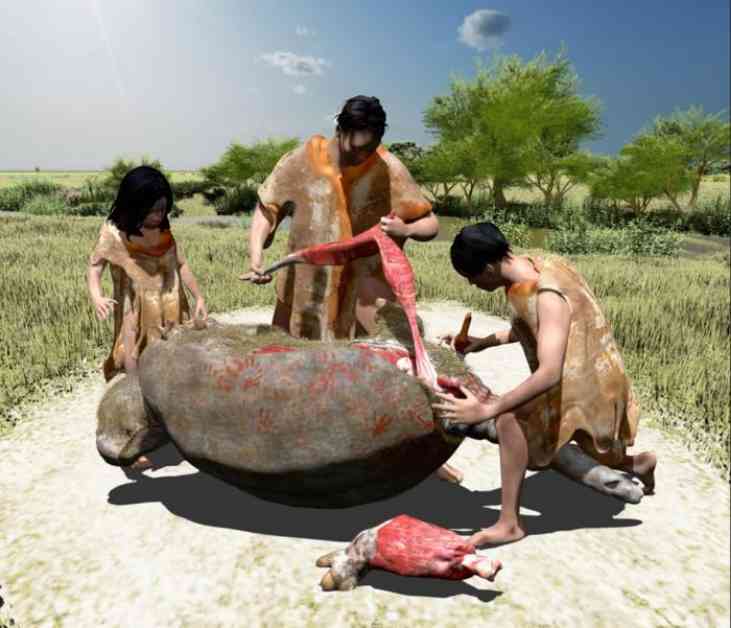Humans likely hunted and butchered giant armadillo-like creatures over 20,000 years ago in South America, according to a recent report in PLOS ONE. The study suggests that these findings not only shed light on ancient dietary practices but also push back the timeline of human presence in the region by approximately 6,000 years.
Researchers examined cut marks on the remains of a glyptodont, a large prehistoric mammal similar to an armadillo, found in southern South America. The analysis revealed that the marks were made with stone tools and targeted areas with dense flesh, such as the pelvis and tail. Miguel Delgad, an archaeologist at Universidad Nacional de La Plata in Argentina and co-author of the study, explained that the distribution of the cut marks indicated a deliberate effort to extract muscle packs from the animal.
The radiocarbon dating of the fossils places them at around 21,000 years old, significantly earlier than previously known evidence of human activity in the region. This discovery challenges the traditional timeline of human arrival in South America, which was believed to be around 16,000 years ago. Delgad noted that these findings suggest that humans may have inhabited the continent during or even before the Last Glacial Maximum, a period characterized by harsh environmental conditions.
The implications of this research extend beyond just human history. The study may provide insights into the Pleistocene Epoch mammal extinction, a complex event that saw the disappearance of many large species. By demonstrating that humans were consuming megafauna much earlier than previously thought, the study suggests that human activity may have played a role in the extinction process.
Further excavations at the site where the glyptodont remains were found could yield additional evidence to support these claims. By exploring the relationship between early humans and the environment, researchers hope to gain a better understanding of the factors that shaped the prehistoric landscape of South America.
Overall, this study highlights the importance of reevaluating existing archaeological paradigms and pushing the boundaries of our knowledge of human history on the continent. It underscores the need for continued research and exploration in order to fully grasp the complexities of ancient societies and their interactions with the environment.






